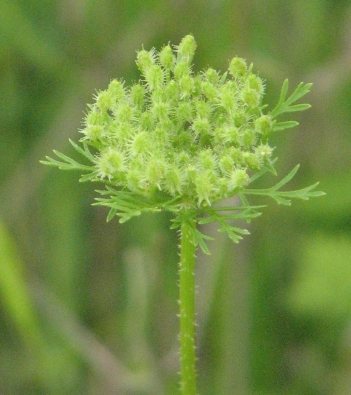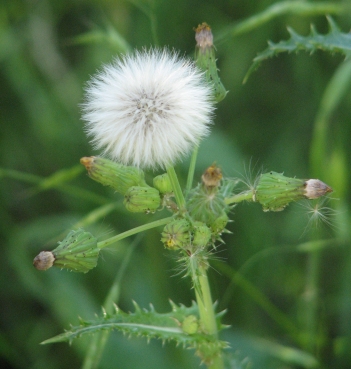Beauty-Berry; American Beauty-Berry Callicarpa americana L. A woody, deciduous, understory shrub with slightly fuzzy twigs, and soft, broadly elliptical, opposite leaves with toothed margins. The main stem does not develop thick bark, and branches are straight, but divide at sharp angles. The leaves smell pleasant when disturbed, though they do not have a strong aroma, like spices or sages. Small, white flowers with inconspicuous petals are born in small, dense umbels from leaf axils toward the ends of new stems. The 5 basal stamen, each tipped with a yellow anther, protruding beyond the petals. Flowers convert to crowded, dense clumps of light purple to blue berries, slightly sweet to the taste. The berries, each with four tiny seeds, touch each other, seeming to bud directly from the stems. (892) 8/15/18 (Berry 9/20/18); 6/18/19;

Beauty-berry flowers; a short, deciduous understory shrub with opposite, slightly fragrant, coarsely serrated leaves bearing dense umbels of small, white flowers from new leaf axils, the 5 basal stamen projecting beyond the 5 inconspicuous petals

Note; deciduous woody stems with thin bark and soft new growth preferring partial shade along trail margins, bearing broad, soft, slightly fragrant leaves with coarsely toothed margins, arranged in opposite pairs

Note; opposite pairs of large, soft, slightly fragrant leaves with coarsely toothed margins bud and grow in before flowers appear.

Note; tight bunches of light purple to blue berries, each with 4 tiny seeds, that have a slightly sweet taste


























